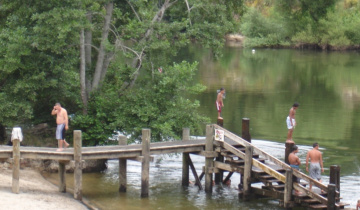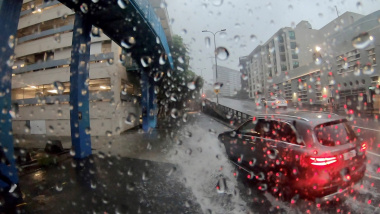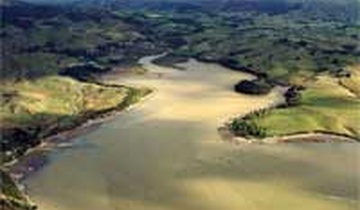NIWA today released a report reviewing its seven station temperature series, which adds to its analysis of New Zealand’s temperature trends over the past 100 years.
NIWA releases review of NZ temperature trends
NIWA today released a report reviewing its seven station temperature series, which adds to its analysis of New Zealand’s temperature trends over the past 100 years.
The report was independently peer reviewed by Australia’s Bureau of Meteorology to ensure the ideas, methods, and conclusions stood up in terms of scientific accuracy, logic, and consistency.
“We asked the Australian Bureau of Meteorology to conduct the peer review to ensure a thorough examination by an independent, internationally respected, climate science organisation”, said NIWA CEO John Morgan.
Mr Morgan confirmed that the scientists from the Bureau’s National Climate Centre concluded that the results and underlying methodology used by NIWA were sound.
NIWA’s seven station temperature series comprises temperature records from Auckland, Wellington, Masterton, Nelson, Hokitika, Lincoln, and Dunedin. The seven locations were chosen because they have robust and well documented temperature records that go back 100 years or more, and they represent a good geographical spread across New Zealand.
Temperature data from the seven locations were first examined 30 years ago by leading New Zealand climatologist, Dr Jim Salinger. After making some adjustments for changes in measurement sites, Dr Salinger concluded that the average New Zealand temperature had warmed significantly during the 20th Century.
The series from the seven stations were reviewed in 1992, and then updated annually. They indicated a warming of about 0.9°C over the 100 years up to 2009.
In 2010, NIWA re-analysed the Hokitika station temperature series and published the results to demonstrate the methodology applied in creating a temperature series. Because of the public interest in climate data, the NIWA Board and the Minister of Research, Science & Technology, Dr Wayne Mapp, asked that a full review of each of the seven sites be undertaken by NIWA. That review has been completed, independently peer reviewed, and the report released today represents the results of that work.
“I am not surprised that this internationally peer reviewed 2010 report of the seven station temperature series has confirmed that NIWA’s science was sound. It adds to the scientific knowledge that shows that New Zealand’s temperature has risen by about 0.9 degrees over the past 100 years” Mr Morgan said.
To illustrate this story:
Download graphs and captions from
http://ftpmedia.niwa.co.nz/Seven_Station_Series
You can also download the full report. (169 page PDF, 7.6 MB)
Questions and Answers
What does the re-analysis show?
The key result of the re-analysis is that the New Zealand-wide warming trend from the seven-station series is almost the same in the 2010 revised series as in the previous series. That is, the previous NIWA result is robust. In terms of the detail for individual sites, the 100-year trend has increased at some sites, and decreased at others, but it is still within the margin of error, and confirms the temperature rise of about 0.9 degrees over the last 100 years.
What is the seven station temperature series?
The seven station series is an analysis of temperature trends from climate station data at seven locations which are geographically representative of the country, and for which there is a long time series of climate records (over 100 years): Auckland, Wellington, Masterton, Nelson, Hokitika, Lincoln (near Christchurch), and Dunedin.
The concept of the seven-station temperature series was originally developed by Dr Jim Salinger in 1981. He recognised that, although the absolute temperatures varied markedly from point to point across the New Zealand landscape, the variations from year to year were much more uniform, and only a few locations were actually required to form a robust estimate of the national temperature trend.
The seven-station series was revised and updated in 1992, and again in 2010.
How is the seven station series constructed?
At each of the seven locations there have been changes in specific climate station location over time. When you create a long time series by adding information from each of these station locations together, you have to make adjustments to account for these changes.
There have been various changes in location etc over time at each of the seven locations making up the seven station series. In order to create a long time series at each location, it is necessary to merge temperature records from a number of specific sites have been merged together to form a long time series. When merging different temperature records like this, it is necessary to adjust for climatic differences from place to place or significant biases would be introduced. Adjustments may also be needed even if the site does not physically move, because changes in exposure or instrumentation at a given site can also bias the temperature measurements.
Why do you need to adjust the raw data?
Long time series of climate data often have artificial discontinuities – caused, for example, by station relocations, changes in instrumentation, or changes in observing practice – which can distort, or even hide, the true climatic signal. Therefore, all climatic studies and data sets should be based on homogeneity-adjusted data.
That is what NIWA climatologists have done in the seven station series, and the seven individual station review documents outline the adjustments.
The raw (original) climate station data have not been changed and are freely available on the NIWA climate database, which means that the NIWA seven station series can be easily reproduced.
How does the NZ temperature rise compare with the global temperature rise?
The 2010 NIWA review of long-term trends in New Zealand’s annual mean temperature showed a rise of about 0.9 degrees Celsius over the last 100 years (0.91 +/- 0.3 degrees C per Century). The IPCC estimate of the 100 year global temperature trend from 1906 to 2005 is 0.74 degrees Celsius, The difference between the IPCC global trend and NIWA’s New Zealand number is less than the margin of error of the trend estimates. The IPCC estimate is a global average – different parts of the world will show different rates of warming. New Zealand is strongly influenced by its oceanic environment.
What is the peer review process?
In this scientific context, peer review constitutes a thorough evaluation of the NIWA documents by individuals with appropriate qualifications in the same field of science (climatology/meteorology). The documents were written by highly qualified NIWA scientists, internally reviewed by other similarly qualified NIWA scientists, and the revised documents were then externally reviewed by Australian Bureau of Meteorology scientists. The external review examined the ideas, methods, and conclusions for scientific accuracy, clarity, and logic.
The NIWA authors then addressed the comments made by the reviewers at the Bureau of Meteorology, and the subsequently revised documents have now been published on the NIWA website.









